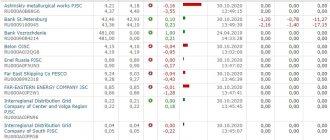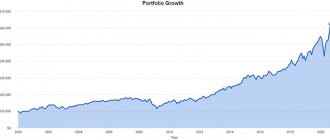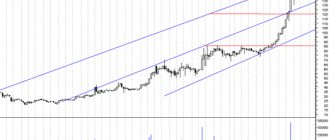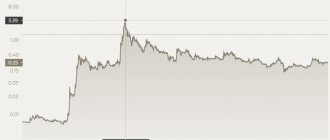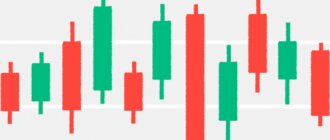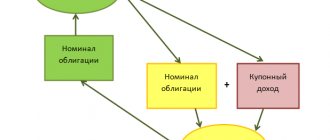The Warren Buffett Stock Portfolio consists of shares of publicly traded companies owned by Berkshire Hathaway Inc., where Warren Buffett is the CEO, Chairman of the Board of Directors and a major shareholder.
Data on stock movements (ie, purchases and sales) in Berkshire Hathaway's portfolio are updated quarterly through a filing with the US Securities and Exchange Commission. Last published on November 15, 2022.
Warren Buffett has also personally owned shares of two banks, JP Morgan and Wells Fargo, for several years (the exact number of shares is unknown).
What is Buffett famous for?
Warren Buffett is the most famous and richest investor in the world. This man began investing in 1962 and achieved amazing results. Now his fortune is estimated at almost 85 billion dollars. Just imagine this figure.
His main motto is discipline, patience and constant analysis of investment instruments.
His life principles:
- Invest in yourself;
- Be confident in your actions;
- The right environment is the key to development and growth;
- Don't keep money in your stockings;
- Get rid of credit cards.
Regarding investing, the tips are as follows:
- Don’t put all your eggs in one basket – there are no investment instruments that are 100% reliable;
- Pay yourself first – save money before you start spending it. Our savings program is ideally suited for such purposes.
- Buy only things you really need - otherwise you will have to sell
The first steps of a future billionaire
Warren Buffett was born in 1930 in the American city of Omaha, Nebraska, where he currently lives. In the family, he was the middle of three children and the only son. Warren inherited his love of numbers from his father, entrepreneur and politician Howard Buffett. The boy idolized his father. Howard Buffett, left unemployed during the Great Depression, managed to create his own investment company with modest savings from working as a stockbroker.
Warren was a bright child and studied at school as an external student. As a teenager, he began making money by delivering newspapers on a bicycle and selling Coca-Cola and chewing gum. Buffett began reading books about investing as a child, he found them in his father's office.
Interesting: Buffett's Million Dollar Controversy
At the age of 11, he bought his first shares with money shared with his sister. When their price dropped, Warren was very worried. As soon as the shares rose in price, he quickly sold them, making a profit of $5. However, if he had waited a few more days, he could have earned almost a hundred times more. This situation taught Buffett that the main virtues of a good investor are patience and composure.
When Warren was 12 years old, the family moved to Washington, which the boy was very dissatisfied with - he loved his hometown and his school friends. He lost interest in his studies and once even tried to run away from home. His parents did not scold him, his father only said that he was capable of more. The father's endless faith in his son became the force that helped Warren achieve success. Buffett is convinced that his father was the best gift in his life.
At the age of 13, Warren managed to accumulate savings, with which he purchased a plot of land. The young entrepreneur began renting it out to farmers, thus obtaining a source of passive income.
Buffett had no intention of going to college. At the age of 16, he graduated from school and became quite successful in buying shares. The father persuaded his son to continue his studies. Warren, not wanting to upset him, went to college. But Buffett didn’t want to waste time, so he completed his studies as an external student, showing brilliant results.
Warren Buffett's investment portfolio
Berkshire Hathaway's portfolio includes stocks of only successful companies that generate maximum returns for their shareholders. When selecting them, Buffett uses both technical and fundamental analysis. This makes it possible to diversify the composition. Although the stocks are marked by the geography of only the American market, they include all sectors of the economy.
Let's look at the TOP 10 stocks in the portfolio:
As you can see, the bulk are companies that conduct simple and understandable business. At the same time, it is important who manages the company and what methods are used to achieve financial goals. Buffett prefers to deal with decent and honest company managers. More details about the portfolio can be found here.
Berkshire Hathaway: A Brief History
Berkshire Hathaway was founded in the 19th century as not one, but two separate cotton mills in Massachusetts - Berkshire Fine Spinning Associates and Hathaway Manufacturing. The two companies merged in 1955 to form Berkshire Hathaway. In 1965, Warren Buffett and his investment company came to buy and take full control of the struggling company. Under his leadership, Berkshire Hathaway became one of the largest holding companies in the world.
Buffett officially turned Berkshire Hathaway into a conglomerate by purchasing National Indemnity—the first of what would become many insurance acquisitions for the company—while distancing himself from the textile industry by liquidating those assets entirely. The company has expanded its holdings to include other insurance companies as well as companies in the financial, apparel, entertainment, food and beverage, utilities, furniture, home furnishings, media, materials and construction industries.
Warren Buffett's portfolio: TOP 5 companies
To understand the principle of choosing companies, let’s analyze the 5 largest players in W. Buffett’s portfolio. The list looks like this:
- Apple is the absolute leader in the digital market, confidently maintaining the quality bar. The share of shares in the total portfolio is about 30%. The number of shares is about 245 million. Ticker - AAPL.
- Bank of America is one of the TOP largest American banks with stable financial results. The share of shares in the total portfolio is about 13.5%. The number of shares is about 925 million. Ticker – BAC.
- Coca Cola has been a leader in the production of soft drinks for many years. The share of shares in the total portfolio is about 9%. The number of shares is approximately 400 million. Ticker - KO.
- American Express is a financial company service used by banks all over the world. The share of shares in the total portfolio is about 8%. Number of shares – 151 million. Ticker – AXP.
- Wells Fargo (FWC) – the story with this bank began back in 1989 and continues to this day. The share of shares in the total portfolio is about 7.18%. The number of shares is approximately 323 million. Ticker - FWC.
Each of these companies is a leader in its industry and provides solid dividends to its shareholders.
Apple (NASDAQ:AAPL)
Share price: $186.87
Where does Buffett invest? — Of course, to the most expensive company in the world. Berkshire Hathaway significantly increased its stake in Apple in 2016. In the fourth quarter alone, the volume of investments quadrupled.
The company continues to grow, and its products remain highly popular. Therefore, the share price is close to a record high, partially supported by the company through the purchase of its own securities and stable dividends. Many mutual funds are holding Apple shares as the company sets new iPhone sales records. While Apple remains a leader in the technology space, the market is cautious about continued growth as new iPhone models do not always perform as well as before.
The 90/10 portfolio principle
Since the great investor is already quite old, he, like a good family man, took care of the management of affairs after his death. Thus, the idea of the 90/10 strategy arose, which is recommended to be used as a basis for beginning investors who want to invest for the long term.
So, what is the main idea of this Warren Buffett portfolio:
- Invest 90% of the budget in American stocks through the purchase of ETF's
- 10% in short-term Treasury bonds.
As an affordable alternative for investors, 90% of the portfolio can be placed in ETFs for the S&P 500 index. We talked about how you can invest in this index with capital protection here.
For the remaining 10% of the portfolio, you can also buy matching ETFs. Our detailed overview of how you can buy ETFs is presented in the article “How to buy ETFs”.
What is the essence - receiving high dividends due to an increased share of shares in the portfolio. Followers of this strategy note a low loss threshold - no more than 10%.
As an experiment, Spanish financier J. Estrada formed a conditional portfolio using the 90/10 method in the amount of $1,000. In the process of tracking the behavior of assets, different historical periods of time with their economic downturns and upswings were taken as a basis. As a result, the strategy sank in only 2% of the time periods taken.
However, the main parameter of success, as always, is the quality of the assets being filled.
Investment lesson from childhood
Warren Buffett's biography was almost never accompanied by sharp ups and downs; he steadily increased his capital, starting from childhood. He made his first investment at the age of 11 - he borrowed $38 from his father and invested it in shares of the Cities Service company. Then he sold them for $40. With the deduction of commission, I earned about $5 in profit with a total investment of $114.
One can only imagine how disappointed the young investor felt when, in the following days, the shares of this company increased 5 times. This experience allowed Buffett to quickly learn an important rule and develop one of the main skills of a successful investor - patience. That's why he recommends not watching the markets closely to protect yourself from uninformed emotional decisions.
Results
The Berkshire Hathaway team, following his strategy, strives for long-term investments. Like Buffett himself, who likes to repeat that he always wanted to own assets. It is long-term passive investing, thanks to compound interest and financial discipline, that brings amazing results.
Order a free personal calculation of the investment program and a ready-made portfolio of ETFs from UNIT-LINKED.RU. Write to our managers at or call the number . We will send you a PDF file with all the details.
United Continental Holdings (NYSE: UAL)
Promotion price: $69.59
In March 2022, Berkshire Hathaway reported holding approximately $1.9 billion in shares of Unired Continental (the fourth largest US airline). These are some of Warren Buffett's best stocks. United Continental has reported average annual profit growth of 13% over the past five years. And over the last 12 months, shares have traded in a range of $56.51 to $83.04.
Commodity dependence
At first, you might think of this question as a radical approach to choosing a company. Buffett, however, believes the issue is important. It tends to shy away (but not always) from companies whose products are indistinguishable from competitors' and those that rely solely on commodities such as oil and gas. If a company doesn't offer anything different from another company in the same industry, Buffett doesn't see anything that makes the company different. Any characteristic that is difficult to replicate is what Buffett calls a company's "economic moat" or competitive advantage. The wider the moat, the more difficult it is for a competitor to bypass it and gain market share.
Benjamin Graham
But the most fateful meeting occurred between Buffett and Katherine Graham’s namesake, Benjamin Graham.
Left - young Buffett, right - Benjamin Graham
This man is considered the father of fundamental security analysis.
He wrote such great books as Security Analysis and The Intelligent Investor.
Graham was a great teacher (he taught at a university and wrote books) and practitioner (he was the managing partner of an investment partnership and earned his investors an average of 17% per annum over 30 years).
People who attended Graham’s lectures (and not only students, but also professionals from the world of finance liked to attend his lectures) said that after the lecture, with examples, one could go “to the bank” or to the stock exchange and safely buy what he recommended. Are there many such teachers in universities now...
Is the stock cheap?
This is the key. Finding companies that meet the other five criteria is one thing, but determining whether they are undervalued is the most difficult part of value investing. And this is Buffett's most important skill.
To test this, an investor must determine a company's intrinsic value by analyzing a number of business fundamentals, including earnings, revenue and assets. And the intrinsic value of a company is usually higher (and more complex) than its liquidation value, which is what the company would be worth if it were broken up and sold today. Liquidation value does not include intangible assets, such as brand value, which are not explicitly stated in the financial statements.
Once Buffett determines the intrinsic value of a company as a whole, he compares it to its current market capitalization—its current total value or price. Sounds simple, doesn't it? Well, Buffett's success, however, depends on his unrivaled skill in pinpointing this intrinsic value. While we can outline some of his criteria, we have no way of knowing exactly how he achieved such precise mastery of cost calculation.
Summary
As you've probably noticed, Buffett's investing style is similar to that of a bargain hunter. It reflects a practical, down-to-earth approach. Buffett adheres to this opinion in other areas of his life: he does not live in a big house, he does not collect cars and does not take a limousine to work. The value investing style is not without its critics, but whether you support Buffett or not, his investing results are the proof.
- Buffett follows the Benjamin Graham school of value investing, which looks for securities that are priced unreasonably low based on their intrinsic value.
- Instead of focusing on the intricacies of supply and demand in the stock market, Buffett looks at companies as a whole.
- Some of the factors Buffett considers are a company's performance, its debt, and its profit margin.
- Other considerations for value investors like Buffett include whether companies are public, how dependent they are on commodities and how cheap they are.
And that's all about Warren Buffett today. I hope the article was useful to you. Share the article on social networks and instant messengers and bookmark the site. Good luck and see you again on the pages of the Tyulyagin !
- 1
Share




